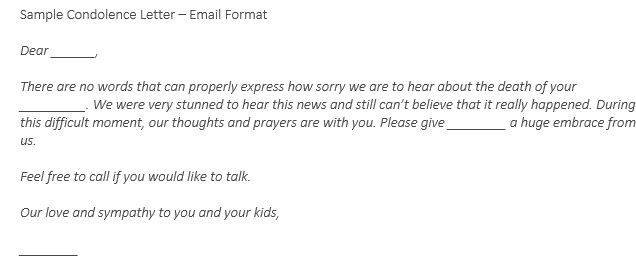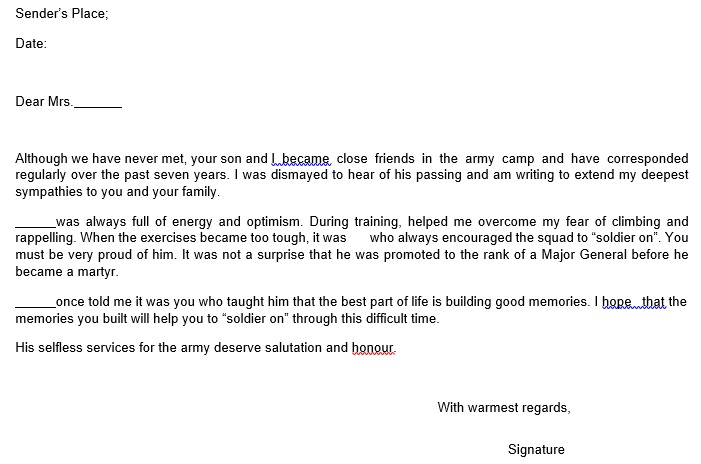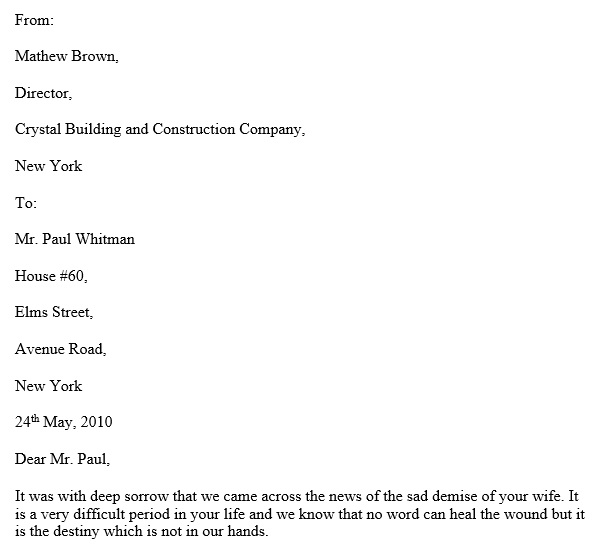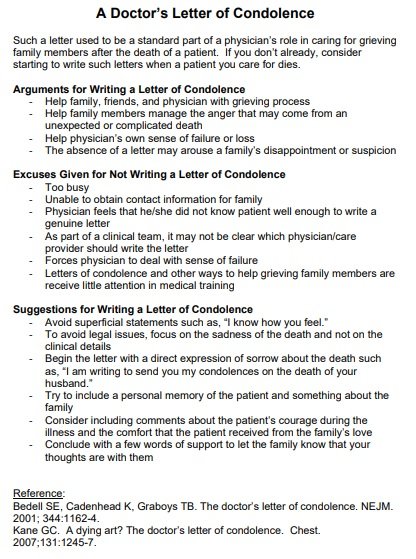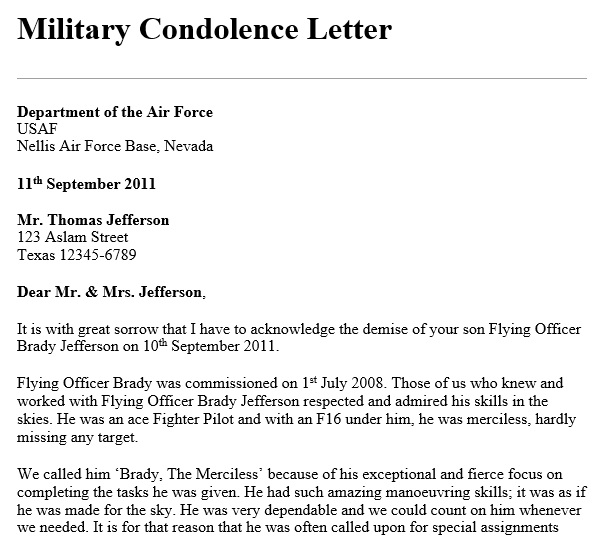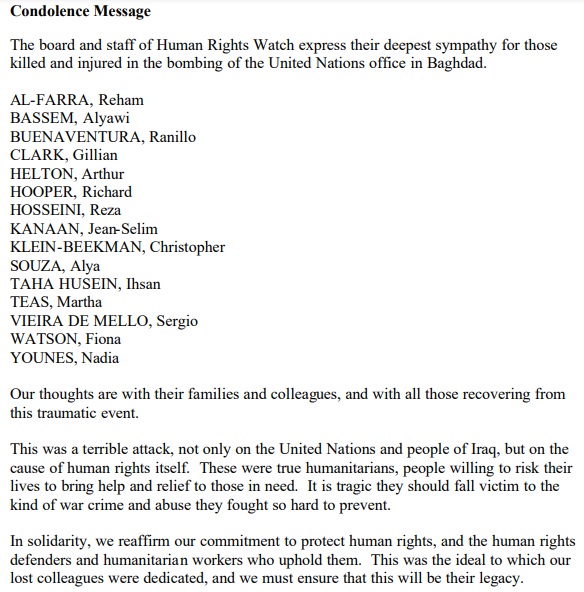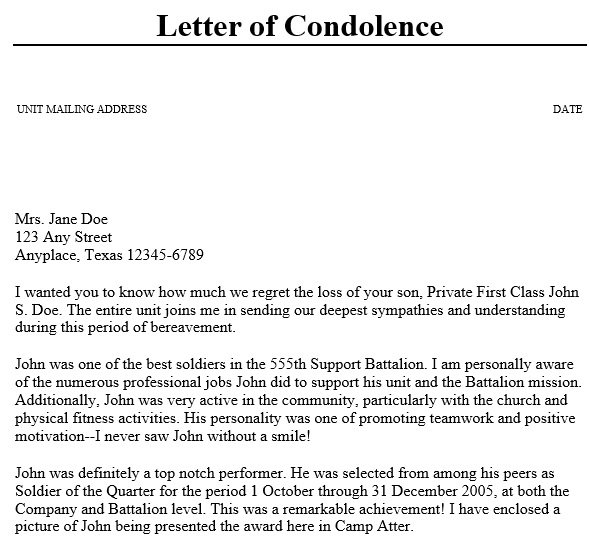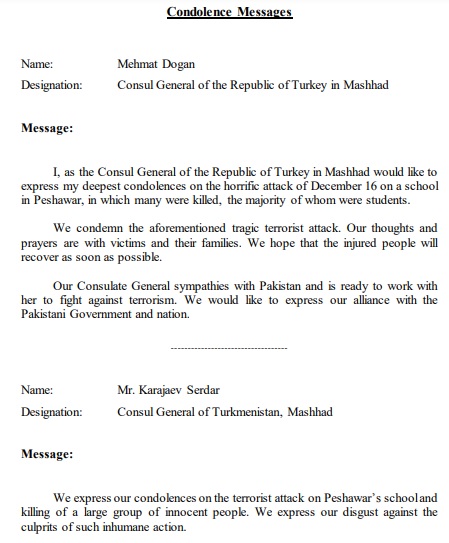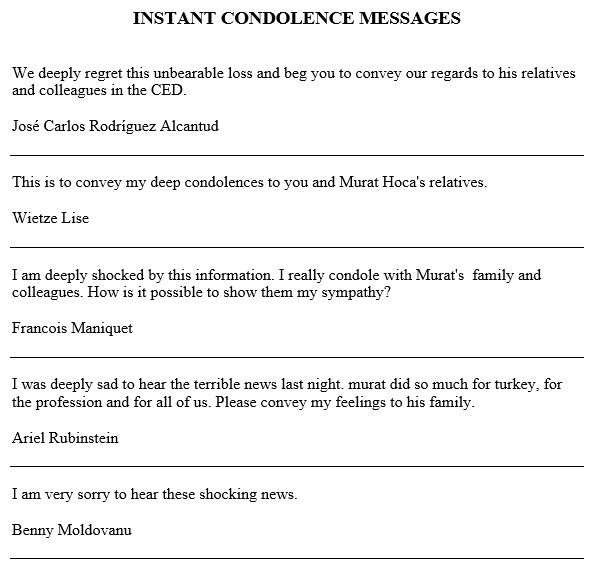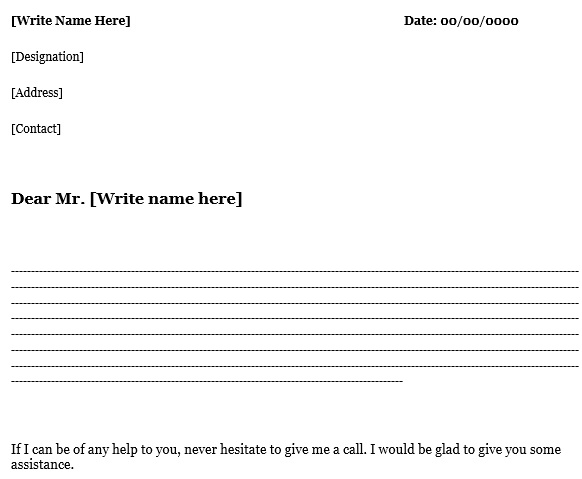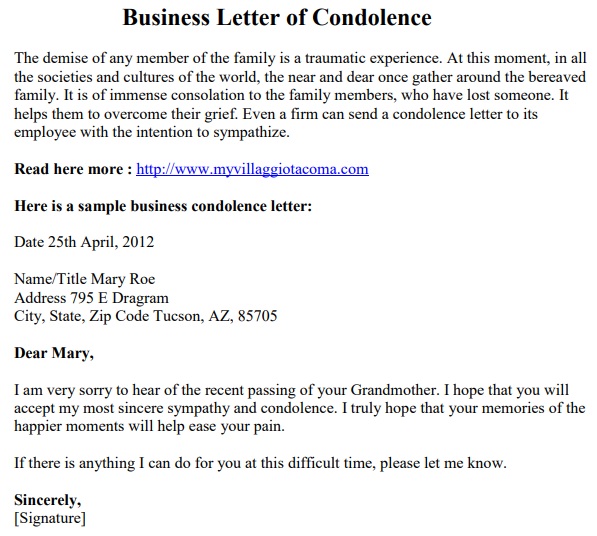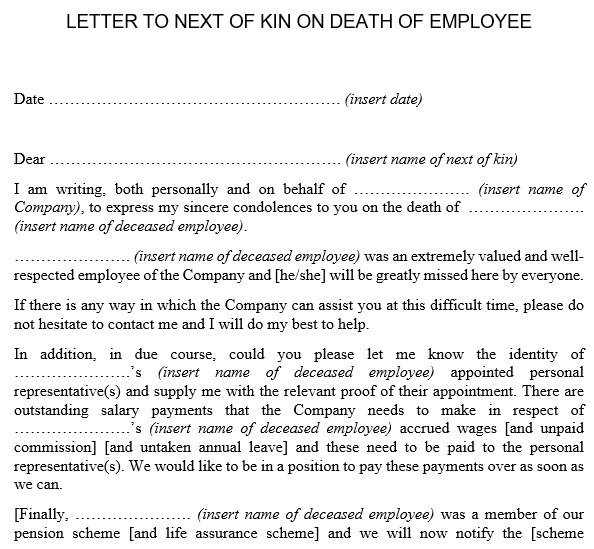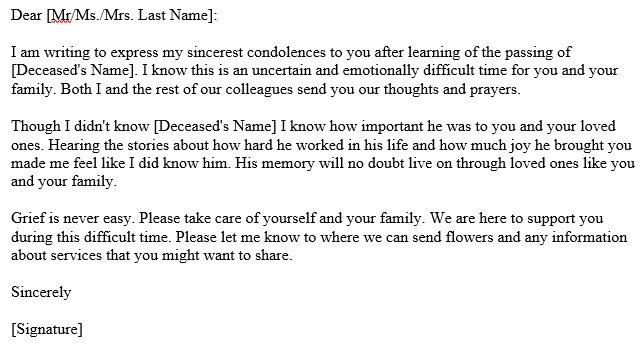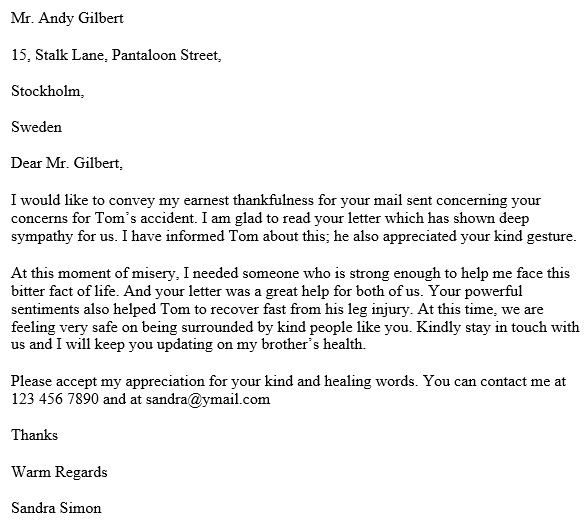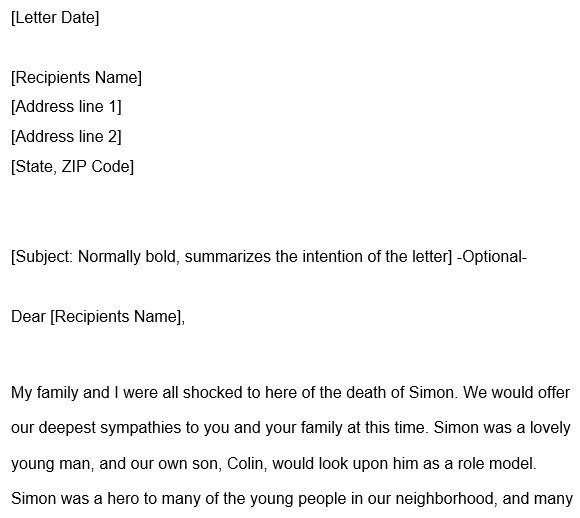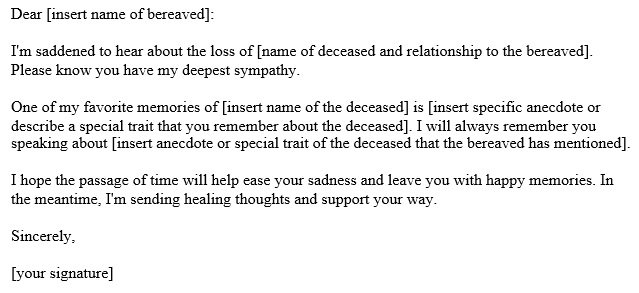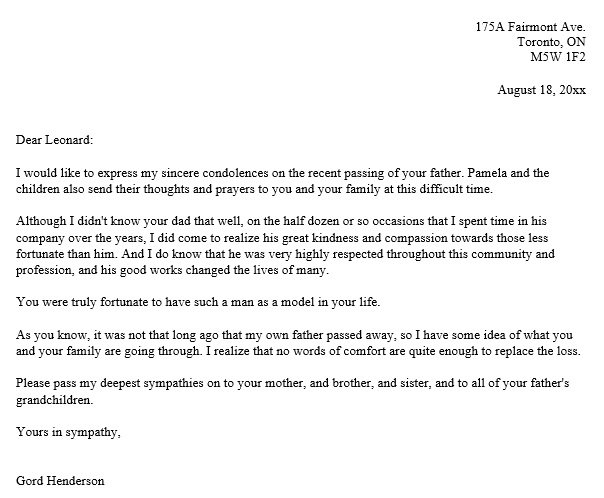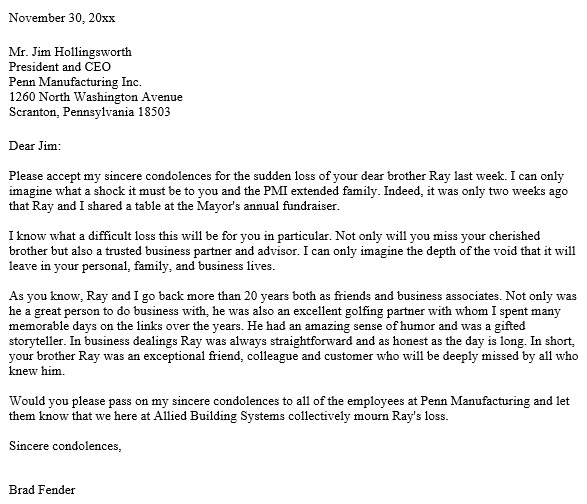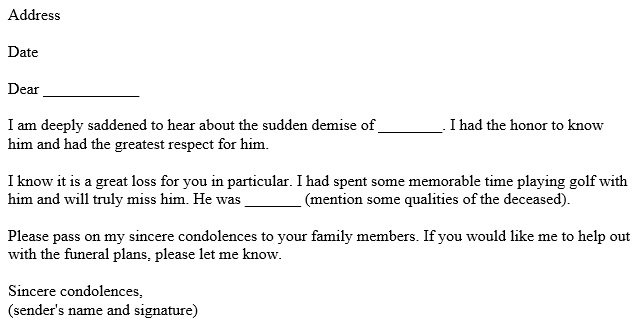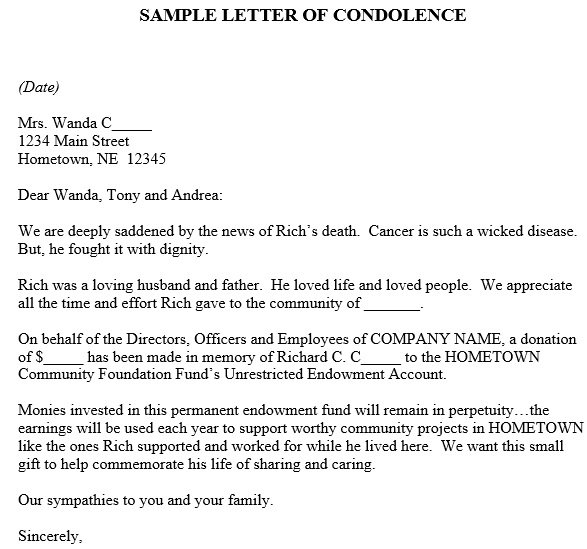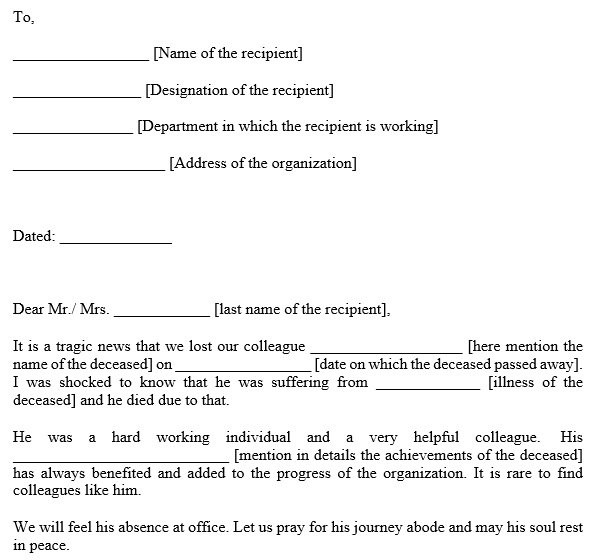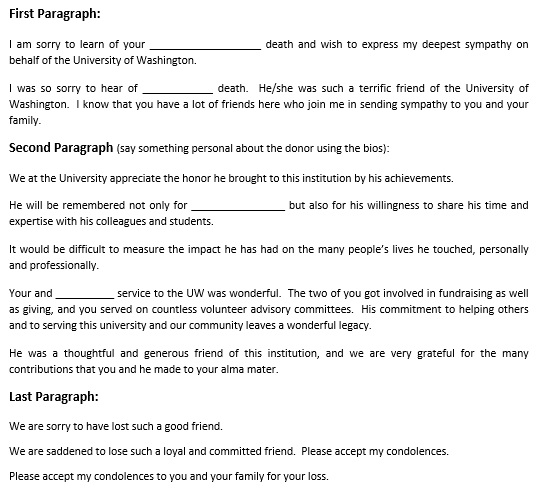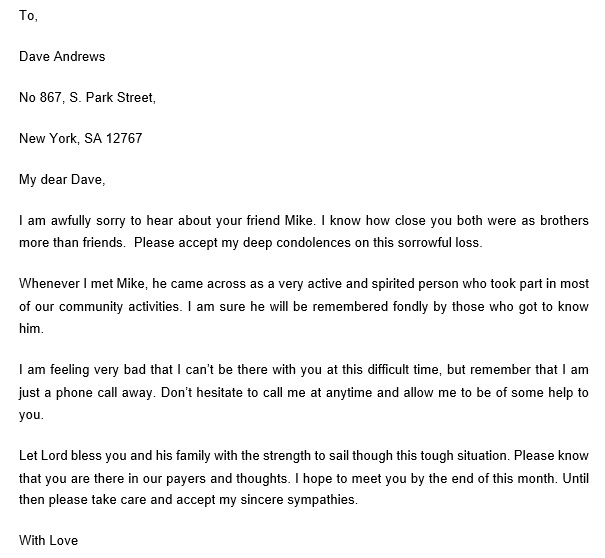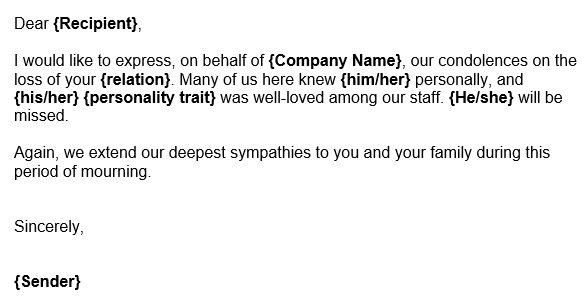A condolence letter is written to lessen the burden of the person who has lost someone. This letter may give some sort of comfort to the person who is grieving the loss of a loved one. A lot of thought and effort is required to write this letter. Sending condolence letter means that you care for the person. Therefore, you should use right words to convey the message without causing negative feelings.
Table of Contents
Components of a condolence letter:
During writing a letter of condolence, you have to write more than just a sympathy note. Usually, this letter is written by someone who is closer to the person who has suffered a loss or knows the person who had actually passed away. There is no specific format for writing this letter but there are some essential components which would make it effective. Below are the elements that condolence letter should contain;
Acknowledge the loss:
At first, acknowledged the loss and use the name of the person who has passed away. Don’t use vague sentences or phrases just to avoid the fact. This is because the recipient already knows that. Instead of this, you should acknowledge the loss and use the words of comfort to help them deal with the sad situation. It’s a better idea to express words of sympathy and share some memories you remember about the deceased as well as your favorite memory of him/her. After that, remind the recipient of his/her strengths and how he/she can be used to go through this sad time.
Offer a certain kind of help:
Then, you should offer a specific kind of help to the deprived. You should also think about practical and specific ways you can help out the recipient. You can help him/her by bringing refreshments to the wake or during the funeral, something as big as taking care of the transportation. This may consider a big help to the family of the deceased. Also, they would appreciate it a lot.
A thoughtful hope:
In the end, include a thoughtful hope or expression of sympathy. Instead of using a single word, you should use a phrase or a sentence so that it would seem more personal and sincere.
Why should you write a condolence letter?
Writing the heartfelt words of condolence is more meaningful for the recipient. A written condolence letter indicates that they are important to you. Also, it gives great comfort to the person mourning the loss of a loved one. You can also share a special memory you might have of the deceased by writing a personal letter. In the letter, you can also offer to talk or help in the weeks and months ahead.
What are different techniques to write a condolence letter?
You can use different techniques to write a condolence letter. These techniques and steps can act as instructions for you. Here are some steps that you should consider;
In the beginning of the letter
When you hear the news of the deceased, start writing your letter shortly. At least within 2 weeks from when the person passed away, you have to send this letter. In case, you heard the news after some months or years it happened, you can still write the letter. While writing, you should make sure to set a personal tone to your letter. To do so, express your sympathies and use the deceased’s name.
Keep in mind that the recipient is going through a very difficult time so be very sensitive while writing your statements and sentences. If you and the recipient aren’t shared the same opinions and beliefs then don’t use religious opinions or references.
The body or content of the letter
Expressing your condolence is the main reason to write the sympathy letter. In the first part of the body of your letter, state your condolence and to give it a personal touch, refer to the deceased by name. State your feelings regarding the loss. You can also tell the recipient that the death of their loved one has also made an impact on your life. But, don’t focus on you in the whole letter. Just explain your feeling in a short paragraph and then go back to the topic of the deceased and the family left behind.
Additionally, include fond memories in order to avoid bring more sadness to the person you are writing to. Include good stories and nice memories about the person he/she had lost so that they enjoy while reading your letter. When you share happy memories, you can comfort the recipient indirectly.
Ending or wrapping the letter
Start wrapping your letter when you are done with the main content of your letter. Think of doing something nice for the person and include it into your letter because there is a lot of different tasks are involved in dealing with the wake and the funeral. Be very specific in your offer. Finally, make use of words of comfort to end your letter. Add a phrase or sentence that indicate that you’re supporting them throughout the process of healing. In the end, sign your letter and write your full name.
Tips for writing a condolence letter:
Here are some tips that will help you in writing an effective condolence letter;
- Before start writing a letter, it’s important to write it at the soonest possible time so that you can send it or hand deliver it on time. Keep in mind that when someone dies then the remaining members of the family don’t have enough time because they have a specific timeframe for the wake and funeral services. Therefore, you don’t have sufficient time to come up with a good letter.
- You should write the letter by hand on a nice piece of paper or stationary instead of typing it and printing it on a computer. However, if you are comfortable at composing letters through typing then first type it on the computer and after that just copy the content by hand. Surely, it requires more effort but it would give a bigger impact. It would also consider a lot more meaningful gesture.
- You have to write a letter in your own voice. Just like you are speaking directly to the person you are writing the letter to. Never copy templates in order to seem more articulate as it may actually leave the impression that it’s a bit too bland. Moreover, if you are writing to a person who already knows how you would say things and express yourself so it’s always better to write a letter in your own voice.
- Your letter should be precise, heartfelt, and thoughtful. Also the recipient may not have the time or strength to get through a full page letter. You can lighten the tone and lift the spirits of the recipients by stating good and funny memories of the deceased.
- Ensure to bear in mind religious beliefs. It doesn’t matter what the family of the deceased believes in, still it’s your responsibility to give sympathy to them.
- Most importantly, affix your signature with your full name. This is extremely important because in case if you are writing letter to a friend of the family then may be another member of your family or relative send letters as well.
- If the deceased may have owed you money then never discusses money matters in your letter. However, after when an appropriate amount of time has passed, you can speak about it to the members of the family. In addition, don’t offer financial help in your letter because it may interrupt differently. You can offer to do some chores or to provide a home cooked meal.
- At the beginning of your letter, state that how you had heard about the deceased and how you felt and reacted after hearing the news. This way, you can set the tone of your letter.
- You can also reflect the qualities of the deceased which you really admired. It would provide great comfort to the family by knowing the good qualities of deceased.
- You can send a photo of yourself with the deceased in order to make your letter more personal. At the back of photo provide a precise description of what’s seen in the photo.
- You should try to share a good memory of the person who had passed away. Give assurance and comfort to the deprived.
- Furthermore, you can say everything in your letter but make sure it is appropriate. At the time you are writing the letter, you may feel emotional so when you’re done, read through it again to remove any errors.
How to write on a sympathy card?
Consider the following tips to write on a sympathy card;
- Visit the store and go through the different cards and choose the one that fits the situation and the recipient. You should ensure that the card was meant for the purpose so never select the letter that have a funny or inappropriate message.
- Write your complete name on the card so that the recipient know who you are and how you know the deceased person. In case, you don’t know the deceased person personally then send the card to the person you know who is relevant to or is a friend of the deceased.
- When you are writing on the card, use the correct spelling and grammar. Firstly, write your message on a scrap piece of paper then proofread it and copy the message onto the card.
- In the message, express your feelings and share fond memories that you have with the deceased person.
- There is no need to go generic just due to the situation is uncomfortable or sad. To make your message unique, your own personal twist on your card.
- In the end, send or give your sympathy card to the person at the right time.
Conclusion:
In conclusion, in a condolence letter, you have to put your effort, sincerity, and emotion. You can come up with something which will provide comfort to the family of the deceased. By expressing your sympathies and stating the name of the deceased, you can set a personal tone to your letter.

